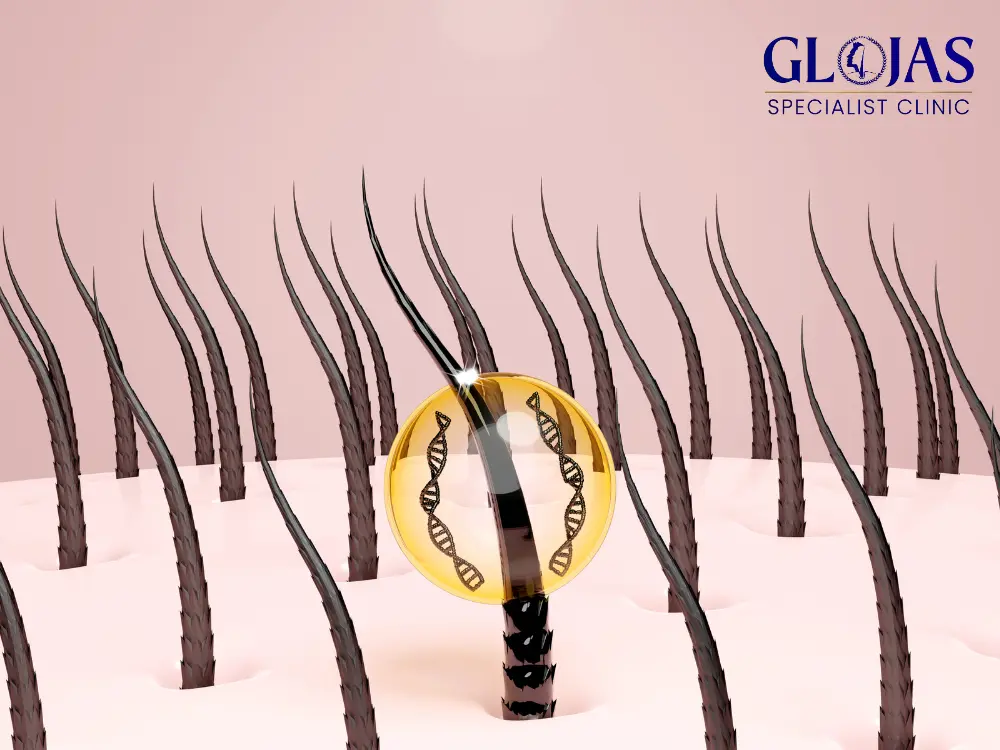The Essential Guide to a Perfect Hair Graft: 5 Critical Steps for Success

Hair loss is a common concern that affects millions of people worldwide, leading many to explore surgical solutions such as hair grafts. A hair graft procedure can be a life-changing experience, offering a permanent solution to thinning hair or bald spots. In this comprehensive guide, we’ll explore what a hair graft is, the procedure’s benefits, and the essential steps to ensure a successful outcome. This video showcases a successful hair transplant procedure using SMART™ FUE at Glojas Clinic with 1500 grafts. What Is a Hair Graft? A hair graft refers to the transplantation of hair follicles from one part of the body, typically the back or sides of the scalp, to areas where hair is thinning or balding. Each graft contains one or more hair follicles and is meticulously implanted into the scalp to mimic natural hair growth. Types of Hair Grafts There are two main types of hair grafts commonly used in hair transplantation procedures: 1. Follicular Unit Transplantation (FUT) FUT, also known as the strip method, involves removing a strip of skin from the donor area. The strip is then divided into smaller follicular units, each containing one to four hairs. These units are carefully implanted into the recipient area. FUT is often chosen for patients requiring a large number of grafts in a single session. 2. Follicular Unit Extraction (FUE) FUE is a more modern technique where individual hair follicles are extracted directly from the donor area using a tiny punch tool. These follicles are then implanted into the thinning or bald areas. FUE is less invasive than FUT and leaves minimal scarring, making it a popular choice for many patients. Benefits of Hair Graft Procedures Opting for a hair graft procedure offers numerous advantages, making it a preferred solution for those dealing with hair loss: 1. Permanent Results Hair grafts provide a permanent solution to hair loss because the transplanted follicles are typically resistant to the hormones that cause baldness. Once transplanted, these follicles will continue to grow hair for a lifetime. 2. Natural Appearance One of the main benefits of hair grafts is that they produce a natural-looking result. The transplanted hair will blend seamlessly with your existing hair, restoring a full and natural hairline. 3. Minimal Downtime Thanks to advancements in hair transplant techniques, particularly with FUE, recovery times have significantly improved. Most patients can return to their regular activities within a few days after the procedure. 4. Boost in Confidence Restoring your hair can have a profound impact on your self-esteem and confidence. A successful hair graft can help you feel more youthful and confident in your appearance. 5 Critical Steps for a Successful Hair Graft Procedure To achieve the best possible outcome from a hair graft procedure, it’s important to follow these five critical steps: 1. Choose the Right Surgeon The success of a hair graft procedure largely depends on the expertise of the surgeon. It’s crucial to choose a board-certified hair transplant surgeon with extensive experience in performing hair graft procedures. A skilled surgeon will not only ensure that the grafts are placed correctly but will also design a natural-looking hairline that suits your face. 2. Have a Detailed Consultation Before the procedure, a thorough consultation with your surgeon is essential. During this consultation, your surgeon will assess your hair loss pattern, discuss your goals, and determine how many grafts you’ll need. This is also the time to discuss the pros and cons of FUT and FUE and decide which method is best suited for you. 3. Follow Pre-Operative Instructions Your surgeon will provide specific pre-operative instructions to prepare you for the hair graft procedure. This may include stopping certain medications, avoiding alcohol and smoking, and washing your hair with a special shampoo. Following these instructions carefully can help minimize complications and ensure a smooth procedure. 4. Understand the Procedure and Recovery On the day of the procedure, the area of the scalp where the grafts will be taken and implanted will be numbed with local anesthesia. The surgeon will then proceed with the chosen technique (FUT or FUE) to harvest and implant the hair grafts. The procedure can take several hours, depending on the number of grafts required. Recovery after a hair graft procedure is generally straightforward. You may experience some swelling, redness, and scabbing in the treated area, but these symptoms should subside within a few days. Your surgeon will give you detailed aftercare instructions to follow during the recovery period. 5. Be Patient with the Results Hair grafts require time to produce visible results. After the procedure, the transplanted hair may fall out within a few weeks, but this is a normal part of the process. New hair growth typically begins within three to four months, with full results visible after about a year. Patience is key to achieving the desired outcome. Factors That Affect the Success of a Hair Graft While a hair graft procedure is generally successful, several factors can influence the final results: Quality of Donor Hair The quality and quantity of hair in the donor area are critical factors. Individuals with thick, dense hair in the donor area are more likely to achieve successful and natural-looking results. Surgeon’s Expertise As mentioned earlier, the surgeon’s skill and experience play a significant role in the success of a hair graft procedure. A skilled surgeon will know how to create a natural hairline and ensure that the grafts are placed in a way that mimics natural hair growth patterns. Patient’s Health and Lifestyle Your overall health can impact the success of the procedure. Patients who are healthy and follow a good lifestyle, including a balanced diet and regular exercise, tend to heal faster and achieve better results. Smoking and excessive alcohol consumption can negatively affect healing and hair growth. Post-Operative Care Following your surgeon’s post-operative care instructions is crucial for a successful outcome. This includes protecting the grafts from direct sunlight, avoiding strenuous activities, and taking prescribed medications as directed. Common Myths About Hair Grafts Myth






